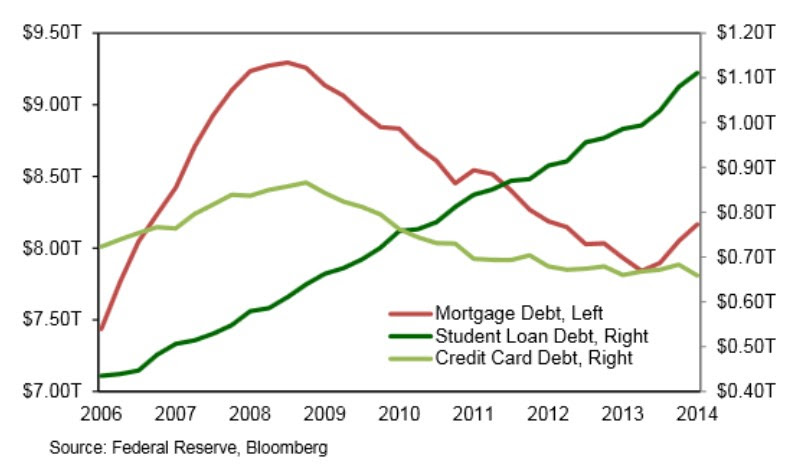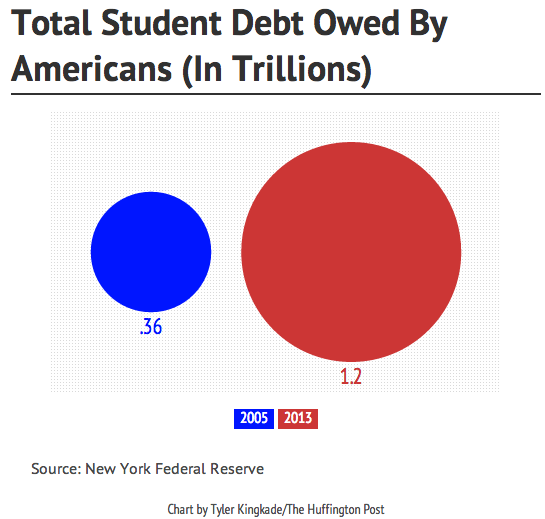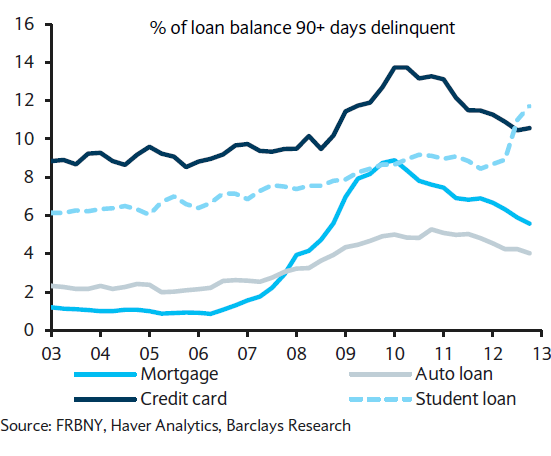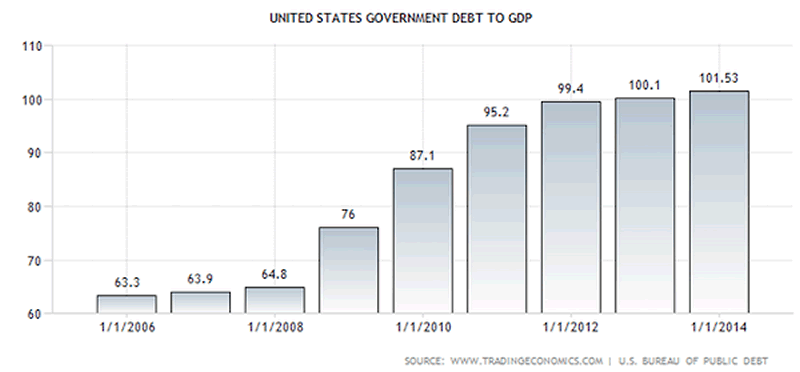The Student Loan Bubble: Gambling with America’s Future
Personal_Finance / Student Finances Jul 02, 2015 - 05:03 PM GMTBy: Peter_Schiff
 Addison Quale writes: The federal government can't seem to help itself. After overseeing the inflating and bursting of the dot-com bubble in the 1990s and the subprime mortgage bubble in the 2000s, the United States government is at it again - this time in the area of student loans.
Addison Quale writes: The federal government can't seem to help itself. After overseeing the inflating and bursting of the dot-com bubble in the 1990s and the subprime mortgage bubble in the 2000s, the United States government is at it again - this time in the area of student loans.
Student loan debt now stands at a record $1.2 trillion, which represents the second largest category of consumer debt after home mortgages. It has grown by leaps and bounds since the financial crisis of 2008 and now surpasses even car loans and credit card debt.

As many are aware, the subprime mortgage bubble was encouraged by politicians' desires to guarantee the American Dream of a home to all Americans - regardless of their credit rating. Generous home loans were offered to people with little wealth or income, and therefore no realistic ability to actually pay them back. But with artificially depressed interest rates and the assumption that home prices would never cease to rise, it didn't seem like such a bad idea. And with Uncle Sam implicitly guaranteeing to buy these risky mortgages from banks no matter what, subprime mortgage lending exploded.
Of course, we now know assumption that home prices would go up forever was wrong. Once home prices got overextended and started crashing back to earth, the party was over. And Uncle Sam (a.k.a. the American taxpayer) was left footing the bill - to the tune of over $400 billion with the Troubled Asset Relief Program (TARP).
It seems to now be happening all over again. This time politicians claim that a college education is part of the American Dream and is a right of all Americans - regardless of their credit rating and SAT scores. Spurred on by even lower interest rates and the implicit promise that John Q. Taxpayer will once again come to the rescue should anyone happen to default, we now have a growing student loan bubble on our hands.
Since 2003, student loan debt has more than quadrupled - rising from $250 billion to well over $1 trillion. It has increased over $500 billion (a 75% increase) since the beginning of President Obama's first term, when it sat at $660 billion. Furthermore, at the end of 2008, the default rate was 7.9%, but now stands at 11.3% - a huge increase that is most assuredly an underestimation.

Perhaps the saddest part is that many of the students receiving these loans aren't even academically prepared for the rigors of college. As a result, almost half of them won't graduate and reap the rewards of their student-loan-fueled college experience. Instead, they'll be saddled with this debt for years to come, because not even declaring personal bankruptcy can dismiss student loan debt.
Now at least 11.3% of all outstanding student loans are in default. When added to those in deference or forbearance, which are essentially delinquent loans as well, a more accurate figure of at least a 23% default rate emerges. In other words, we are looking at a total default level of over $250 billion, which most likely will end up being covered by the federal government -- otherwise known as the American taxpayer.

Additionally, this $250 billion is just the start of it. It is now projected that the total amount of student loans may balloon to over $3.3 trillion within the next ten years. A 23% default rate on that astounding figure gets you into the neighborhood of over $750 billion. Moreover, with the economy continuing to struggle and more and more college graduates waiting tables instead of finding lucrative jobs, one can only expect this default rate to worsen.
But wait, there's more! With the recent decision to forgive the student loans of all those who were deceived by the false promises of privately-run Corinthian Colleges (a total of over $3.5 billion), a slippery slope situation may now be at work. Many are hinting that the door has been opened to the possibility of student loan debt forgiveness with respect to many other private colleges. It may not be long before there is a blanket call for all student loans that are in any sort of trouble to be forgiven. The total numbers here would be absolutely staggering. Again, the American taxpayer would be on the hook for it.
Some might say, "What's the big deal? America has already been dealing with massive amounts of debt. Is this really going to make that much of a difference?"
The big deal is that the student loan bubble does add significantly to the nation's large debt burden. But more importantly, it is emblematic of an American financial system beholden to a federal government that continues to amass skyrocketing amounts of debt, with neither a demonstrated plan nor any ability to ever pay it off. It's yet another chunk of debt added on to an ever-increasing pile of debt, which now stands at 102% of an $18 trillion GDP and rising. This doesn't even take into account the federal government's unfunded liabilities (i.e., all future Medicare and Social Security commitments), which can be conservatively projected to be well over $127 trillion. Simply put, United States debt is unsustainable.

The fact is, while our financial system seems to be humming along pretty well today, a serious reckoning is inevitable. This current path of consistently spending far more than we consume, lending irresponsibly to those who cannot repay, then just borrowing more and more in order to cover it all up will, indeed, hit a wall.
History has proven time and again that all fiat currencies eventually implode due to their abuse by central bankers. The inevitable bursting of the student loan bubble will add to the already massive debt burden and is just one more example of abuse that points to the eventual collapse of the US dollar. And lest we forget, the collapse of a major fiat currency would not be just an inconvenience for a society, but a crippling blow to Western civilization.
Addison Quale is a Precious Metals Specialist with SchiffGold. He studied economics at Harvard University and earned a Master of Divinity at Gordon-Conwell Theological Seminary. Addison brings a well-rounded perspective to precious metals investing, with work experience at an investment consulting firm in Boston.
Catch Peter's latest thoughts on the U.S. and International markets in the Euro Pacific Capital Spring 2014 Global Investor Newsletter!
Regards,
Peter Schiff
Euro Pacific Capital
http://www.europac.net/
Peter Schiff Archive |
© 2005-2022 http://www.MarketOracle.co.uk - The Market Oracle is a FREE Daily Financial Markets Analysis & Forecasting online publication.



